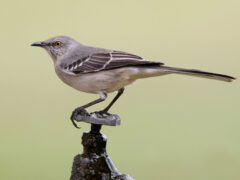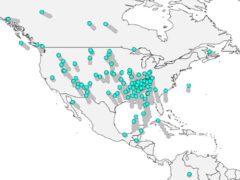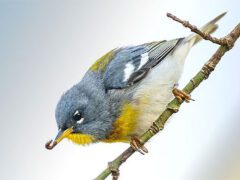The Four Keys to ID
- Size & Shape
A fairly large swift with a long, slim body and very long, narrow wings that curve like a scimitar. The overall slim outline can make it appear small, especially at a distance.
Relative Size
Larger than a Vaux’s Swift, smaller and slenderer than a Purple Martin.

 between sparrow and robin
between sparrow and robinMeasurements
- Both Sexes
- Length: 5.9-7.1 in (15-18 cm)
- Weight: 1.0-1.3 oz (28-36 g)
© Matt Davis / Macaulay Library
- Color Pattern
- Behavior
- Habitat
Regional Differences
Ornithologists recognize two very similar subspecies: saxatalis of North America and the darker nigrior of Central America.











